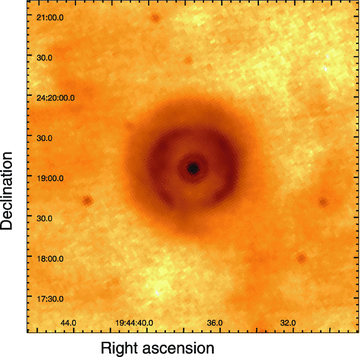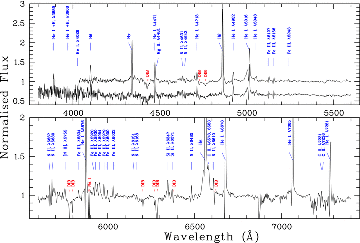

|
New LBV Star Discovered in the Galaxy - a Twin of the Famous LBV P Cygni |
Russian version |
|
Luminous blue variable (LBV) stars are the most massive stars with 40-120
solar masses, which are passing the short stage of evolution losing
their hydrogen envelopes before exploding as Supernovae. These are
extremely rare objects, only about a dozen of the most massive LBVs are
known in the Galaxy. The theory predicts that there should be several
dozen of such objects in the Galaxy. But all still undiscovered
LBVs are hidden from us by the dust absorption. Astrophysicist from
Sternberg Institute V.V.Gvaramadze studied infrared images surveyed by
the space Spitzer Observatory to search for hidden LBVs and made a list
of candidates which later were studied with the BTA.
|

Fig.1. Image of the ring nebula around MN112 (Spitzer MIPS, 24 microns) 
Fig.2. MN112 spectra (BTA, SCORPIO and Calar Alto, TWIN) with an identification of principal lines |